
STOMPer j animal lover says she spotted a man hanging this green birdcage in a mango tree. It had been baited with a whole mango to lure unsuspecting birds into it.
STOMPer j animal lover commented:
"Recently there have been articles posted on STOMP about people illegally plucking mangoes in the Tampines area.
"I was home after buying dinner for my family when I saw a man hang an empty cage on a mango tree to catch birds.
"A mango was placed in the cage to attract the birds.
"This is unforgivable and too much!
"What will he do with the birds after catching them? Sell them for extra cash?"
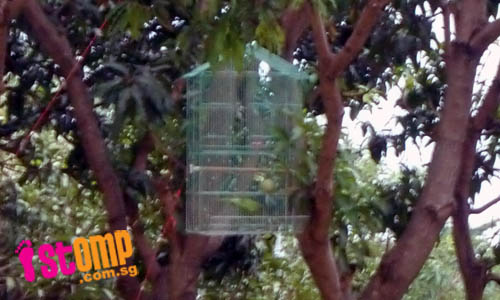
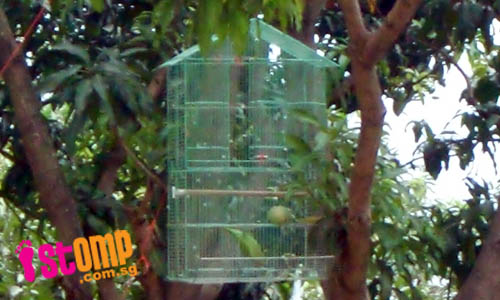
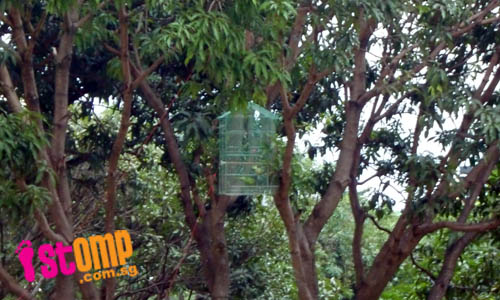

It's likely that this was a poacher attempting to catch birds for the songbird trade. Another possible scenario is that this was an owner attempting to lure and recapture his escaped pet.
Reports about poaching often focus on the large and glamorous megafauna. The killing of animals and the illegal trade in elephant ivory, rhinoceros horns, tiger skins and body parts, bear bile and sea turtle meat and eggs are all problems that have been highlighted to be occurring in various parts of Asia, yet it seems that we are nowhere close to eradicating these practices once and for all. However, poaching also focuses heavily on the smaller creatures, those that are caught to satisfy the greed of markets that demand exotic meat, traditional medicine, or pets.
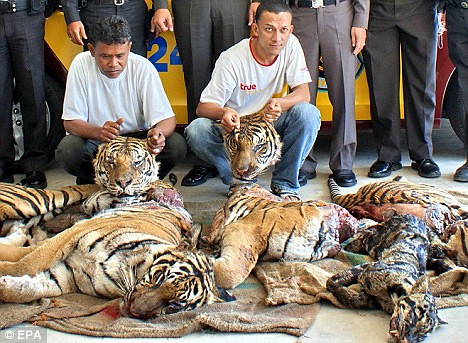
Confiscated tiger (Panthera tigris) carcasses, Thailand;
(Photo by TigerVoice)
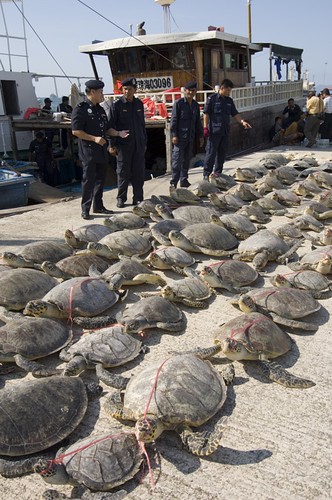
Poaching of sea turtles;
(Photo by SCUBAZOO)

Confiscated elephant tusks;
(Photo by AWF Goes Wild)
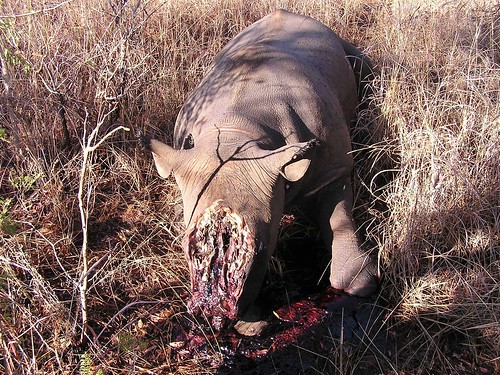
Poached rhino;
(Photo by Challenge4aCause)
For instance, monitor lizards and pangolins are heavily exploited throughout the region, despite laws that are meant to protect them from being hunted. Birds, reptiles, insects and rare plants are harvested from the wild and sold to collectors at high prices. As coral reefs and fisheries are decimated by overfishing, so poaching moves into waters that are meant to be protected. Rangers and wildlife officials put themselves at risk to clamp down on poachers, with varying degrees of success.

Slow loris (Nycticebus sp.) at market, Medan;
(Photo by ~Squil~)
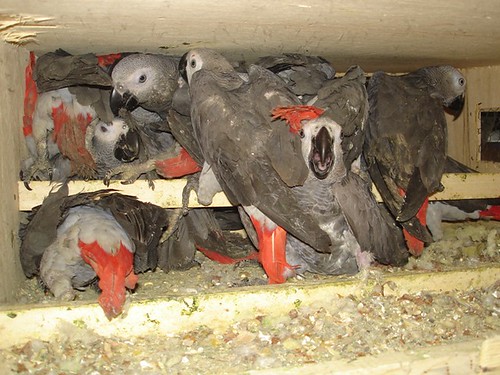
Smuggled African grey parrots (Psittacus erithacus), Cameroon;
(Photo by Born Free Photos)
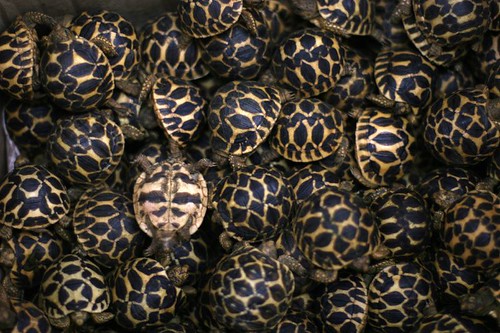
Confiscated baby Indian star tortoises (Geochelone elegans), Mumbai;
(Photo by Tunali)
Wildlife trafficking is a highly lucrative business, and Singapore is part of the vast network that connects poachers, middlemen, and buyers of all sorts of wildlife and wildlife products. Poaching tends to occur on a small scale locally, but the potential consequences cannot be underestimated; the survival of many species, already threatened with extinction here due to habitat loss, is at stake.

Shells, dried sea stars, dried sea urchin tests and corals for sale, Hainan;
(Photo by Roving I)
The Wild Animals and Birds Act states:
"Any person who kills, takes or keeps any wild animal or bird, other than those specified in the Schedule*, without a licence shall be guilty of an offence and shall be liable on conviction to a fine not exceeding $1,000 and to the forfeiture of the wild animal or bird."*The 6 species of birds listed in the schedule are common and abundant species often found in urban areas, and are hence exempted from such protection. They are the house crow (Corvus splendens), feral pigeon (Columba livia), purple-backed starling (Sturnus sturninus), Asian glossy starling (Aplonis panayensis), common myna (Acridotheres tristis), and Javan myna (Acridotheres javanicus).
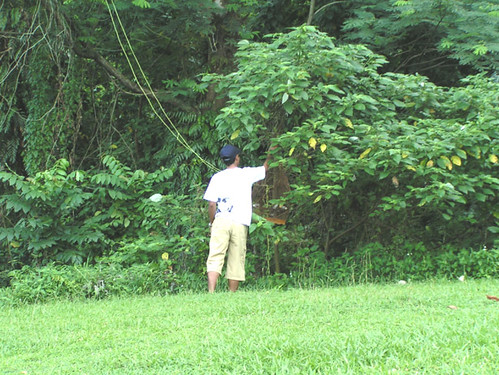
Poaching of songbirds, Khatib Bongsu;
(Photo by Lip Kee)
However, there are clearly many people who brazenly flout this law, and attempt to capture all sorts of wildlife, from birds to turtles to wild boar. Many of these are foreigners who might be unaware of our wildlife protection laws, and who assume that it is fine to catch a monitor lizard, or bird for the cooking pot just like they would back at home. Others are locals who know that what they are doing is illegal, but choose to take the risks because they feel that they have the right to carry on with their hobbies, or find the potential profits that can be earned through the sale of prized wild-caught songbirds worth the penalties.
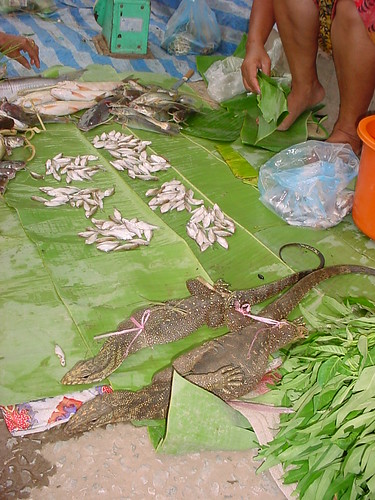
Clouded monitor lizards (Varanus bengalensis nebulosus) in market, Laos;
(Photo by O Dear me!)
Birds such as the spotted dove (Streptopelia chinensis), zebra dove (Geopelia striata), Oriental magpie robin (Copsychus saularis), white-rumped shama (Copsychus malabaricus), Oriental white-eye (Zosterops palpebrosus) and straw-headed bulbul (Pycnonotus zeylanicus) are all targeted by poachers here and in Peninsular Malaysia. And despite the efforts of volunteers to patrol nature areas, the authorities are not always able to arrive in time to apprehend the suspects.
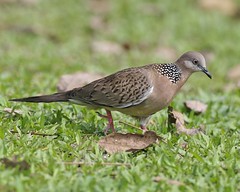
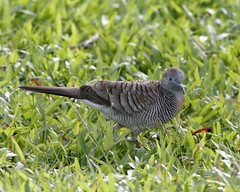
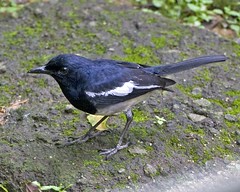
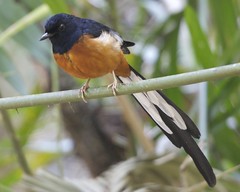
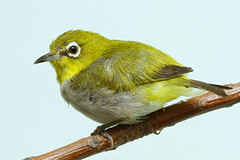
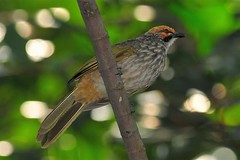
Native birds that are often targeted by poachers for the songbird trade.
Top Left: Spotted dove; Top Right: Zebra dove;
Centre Left: Oriental magpie robin; Centre Right: White-rumped shama;
Bottom Left: Oriental white-eye; Bottom Right: Straw-headed bulbul
(Photos of spotted dove, zebra dove, Oriental magpie robin and white-rumped shama by Lip Kee; Photo of Oriental white-eye by kampang; Photo of straw-headed bulbul by NatureInYourBackyard)
Poaching is a serious matter, especially when populations of certain species are small and cannot sustain heavy levels of exploitation. Species such as the straw-headed bulbul and Sunda pangolin (Manis javanica) are globally threatened with extinction, and depletion of populations in other countries may lead to more poachers descending on our forests.

Poaching of songbirds, Khatib Bongsu;
(Photo by Lip Kee)
It's not just terrestrial organisms that are at risk; marine life such as corals, fishes and molluscs are often collected, even from protected areas. Whether they are caught for food, the seashell trade, or for aquariums, I'm not sure just how much more fishing and exploitation our marine life can sustain.
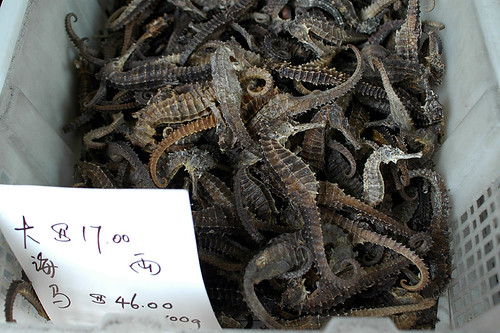
Dried seahorses (Hippocampus sp.), Singapore;
(Photo by six.five)

Bucket full of fishes - is it really necessarily to keep every fish you catch? Pulau Semakau;
(Photo by Ria)
I'm alright with a reasonable level of fishing and collection, and there are species that are capable of supporting heavy levels of fishing. But some species may simply be too low in numbers, or reproduce too slowly to withstand heavy levels of collection. Besides, some of the methods used, such as driftnets and traps, catch and kill a lot of other species that are not targeted and damage the habitats, a wasteful and destructive practice.

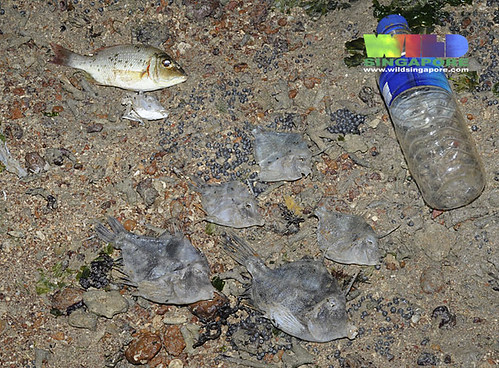
Fishes unnecessarily killed in a bubu trap, Beting Bronok;
(Photos by Ria)
There are those who will argue that the impact of a handful of poachers can never match the damage wrought by habitat destruction. I can agree with that statement, but only to a certain extent. People may think that catching 1 bird or eating 1 fish may not make much difference, but it all adds up in the end. Yes, pollution and habitat loss may have a greater effect on the population of a particular species, but poaching of threatened species and unregulated capture (even of seemingly common ones) are definitely not going to help the situation. Even if said species is still considered abundant elsewhere, that does not give us the excuse to plunder and exploit our own local stocks without regard for the future. After all; the situation may always change, environments elsewhere may be damaged, and we may find that what biodiversity we still have is vital in repopulating other areas. Similarly, perhaps our shores have been able to support the current level of fishing because of continuous dispersal and recruitment from nurseries or refuges elsewhere. No one knows for sure, and yet too many people believe that they can catch all the fish they like and not make an impact on the population.

A day's catch at Changi. How many anglers and fishermen can our seas support in the long term?
(Photo by hairul fitrizan)
Compared to fisheries in Europe and North America, where there is plenty of data regarding the decline or recovery of certain species over the last 2 centuries, the same cannot be said for many if not most marine animals that support a wild harvest in Southeast Asia. We still know so little about the reproductive biology and ecology of many heavily fished species, and it doesn't help that we celebrate the capture of large and relatively rare species such as giant grouper (Epinephelus lanceolatus) or shovelnose ray (Rhynchobatos sp.).
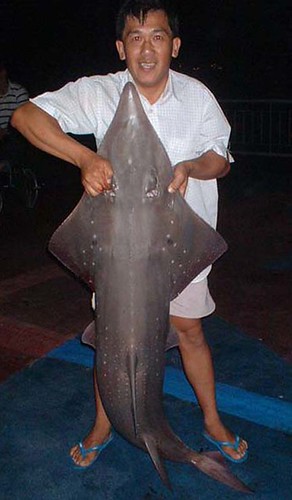
Shovelnose ray, Bedok Jetty;
(Photo by sp0iltbr4t)
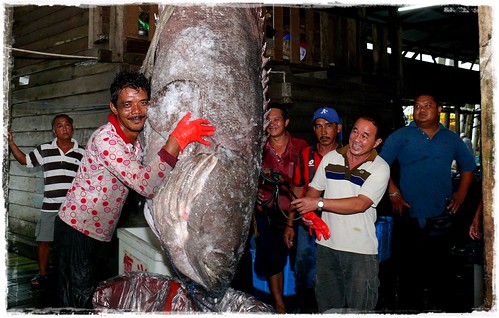
Giant grouper, Malaysia;
(Photo by Astacus)


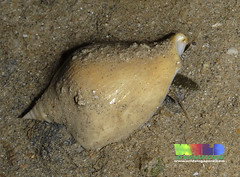

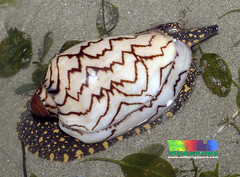

Gastropod molluscs commonly exploited for food in Singapore and elsewhere in Southeast Asia;
Top left: Giant top shell (Trochus niloticus); Top right: Mud creeper (chut-chut) (Cerithidea obtusa);
Centre left: Pearl conch (gong-gong) (Laevistrombus turturella); Centre right: Spider conch (Lambis lambis);
Bottom left: Noble volute (Cymbiola nobilis); Bottom right: Baler volute (Melo melo);
(Photos by Ria)
Removing an individual animal from the wild not only destroys its chances of reproducing and adding to its numbers in the area, it also removes the animal's opportunity to participate in the interactions that it has with myriad other species, and the vital ecosystem services that result, whether as predator, prey, or partner in a symbiotic relationship. Some level of restraint, and if self-policing fails, legislation and enforcement, will be necessary to ensure that the tragedy of the commons does not occur as far as our biodiversity is concerned.

Talang queenfish (Scomberoides commersonnianus) and blacktip reef shark (Carcharhinus melanopterus) killed in driftnet, Cyrene Reef;
(Photo by Ria)
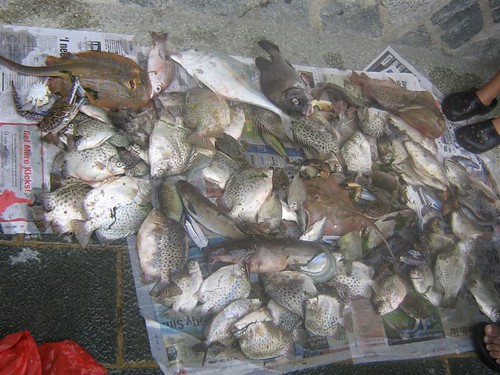
A day's catch, Pulau Sekudu;
(Photo by hairul fitrizan)